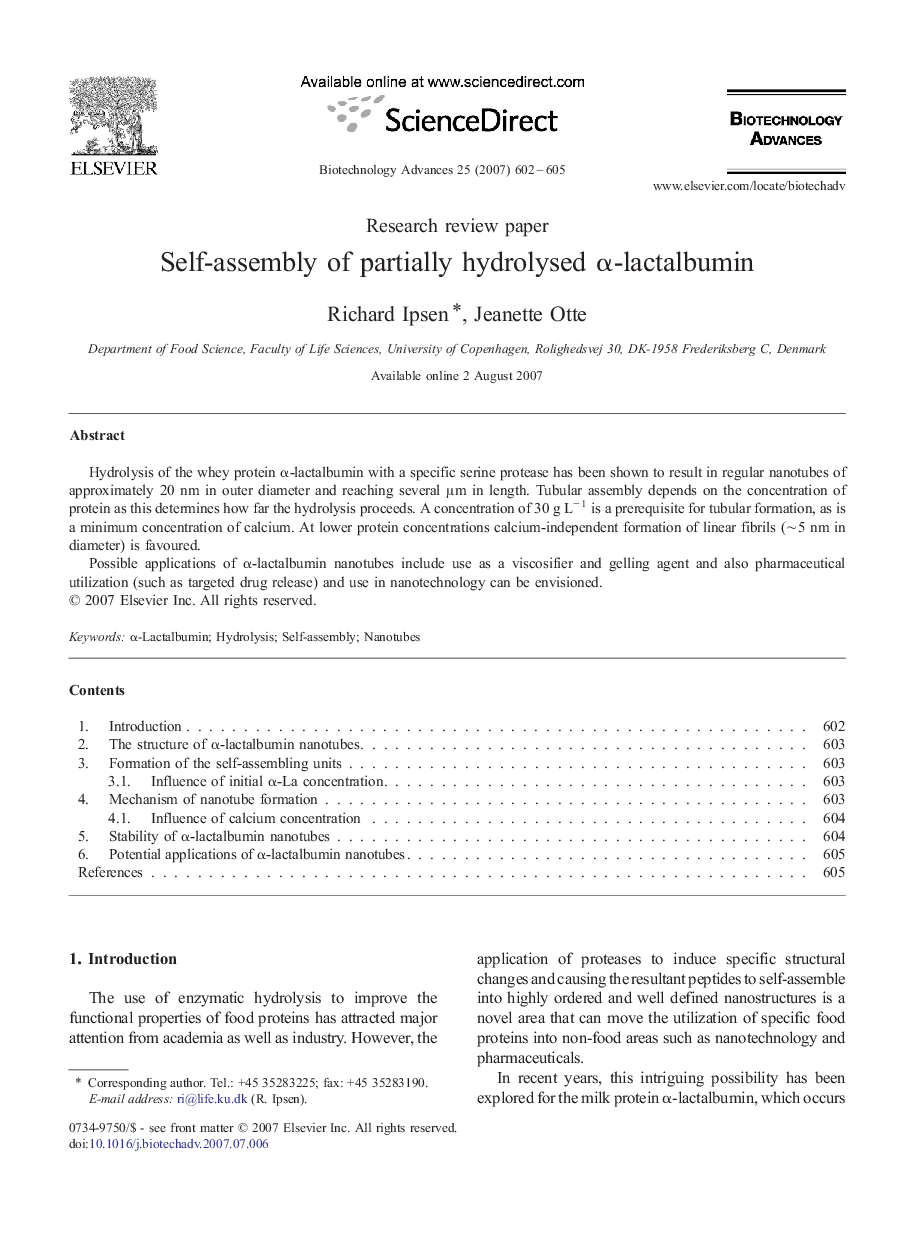| Article ID | Journal | Published Year | Pages | File Type |
|---|---|---|---|---|
| 14561 | Biotechnology Advances | 2007 | 4 Pages |
Abstract
Hydrolysis of the whey protein α-lactalbumin with a specific serine protease has been shown to result in regular nanotubes of approximately 20 nm in outer diameter and reaching several μm in length. Tubular assembly depends on the concentration of protein as this determines how far the hydrolysis proceeds. A concentration of 30 g L− 1 is a prerequisite for tubular formation, as is a minimum concentration of calcium. At lower protein concentrations calcium-independent formation of linear fibrils (∼ 5 nm in diameter) is favoured.Possible applications of α-lactalbumin nanotubes include use as a viscosifier and gelling agent and also pharmaceutical utilization (such as targeted drug release) and use in nanotechnology can be envisioned.
Related Topics
Physical Sciences and Engineering
Chemical Engineering
Bioengineering
Authors
Richard Ipsen, Jeanette Otte,
